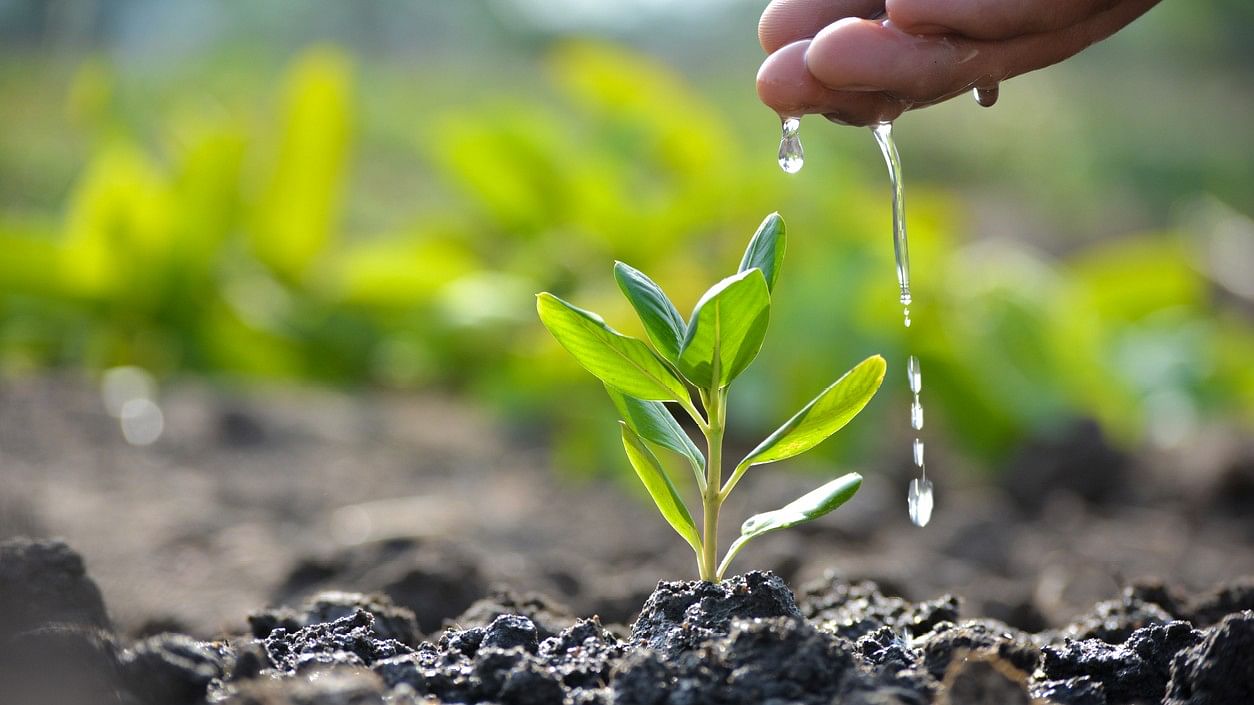
Despite India’s seasonal rainfall pattern, some rivers are perennial due to the healthy forests in their catchment areas, which is crucial for reducing surface runoff and soil erosion.
Credit: iStock Photo
The impact of tree planting on the water cycle and water availability is not well understood, posing serious implications for initiatives aiming to enhance water flow in watersheds and river basins. India’s major rivers originate in forests, such as Mahanadi, which originates in a small forest watershed in Chhattisgarh before being joined by numerous tributaries.
Despite India’s seasonal rainfall pattern, some rivers are perennial due to the healthy forests in their catchment areas, which is crucial for reducing surface runoff and soil erosion. Degraded forests can cause more silt to flow into rivers and affect dam storage. Forests play an important role in watershed development and catchment area treatment plans.
Water security is critical for India, as a deficit can affect agriculture, drinking water supply, and industrial production. The government of India invests significantly in the Integrated Watershed Development Programme, initiated in 2009, covering major watersheds across the country. Additionally, there are many state-specific watershed programmes, such as the Mid Himalayan Watershed Development Project in Himachal Pradesh.
While trees mitigate surface runoff and soil erosion and thereby improve waterflow, they also have high evapotranspiration rates, a process by which trees absorb water through roots and release it as vapour through leaves. In low rainfall areas and tropical arid climatic regions of India, this is an important parameter to consider; otherwise, more trees can reduce the water availability from the watershed. A study published in the journal Nature Geoscience in 2022 using evapotranspiration models estimates that with an increase in tree cover, there could be a possible decline of up to 38% in water flow in some of the world’s major river basins. This article further raises concern about the global forest restoration potential of a study published in the journal Science in 2019 that maps areas where tree cover can be increased but doesn’t consider the possible negative impacts of trees on the water flow.
India aims to restore about 26 million ha of forests by 2030 under the Bonn Challenge, with a target of achieving 33% tree cover, which is currently around 24%. Considering India’s scanty rainfall in some areas, careful planning of tree plantations is essential for watershed security and meeting restoration targets. Currently, there are no evapotranspiration models used to plan the number of trees that can be planted in a watershed, and the watershed management programme or the Joint Forest Management guideline does not recommend the number of tree saplings to be planted per hectare as per the different agroclimatic zones in India. Many plantations by state forest departments are in the range of 600 to 800 saplings per hectare, which could make forests more dense than required for water conservation purposes.
Species like teak (Tectona grandis), with high survival rates, are commonly used for afforestation, but their broad leaves contribute to high evapotranspiration rates, potentially reducing waterflow in the watersheds. Further, there is a difference between upstream and downstream watersheds, and plantations along the downstream will only lead to water loss.
India’s utilisable water resources are estimated to be around 1123 km3, of which the demand is already over 90%, and only a few rivers could meet its desired environmental flow needs—the minimum water flows required to sustain the ecological health of the river. And even a 5% decline in water availability, particularly in the arid and dry climatic regions of India, could push those regions into water scarcity and drought. Tree plantations in such watersheds must be taken up only after conducting studies on evapotranspiration models to estimate the vegetation cover required. Further, trees are not the only vegetation that can reduce surface runoff; grasslands, shrubs, and habitats with low-density tree cover can still have very good catchments. For example, the montane shola grassland ecosystem in the Western Ghats, where many of the rivers of southern India originate, is largely treeless grassland with intermittent shola forests.
Several studies have established that water yield is lower in plantation forests than in natural forests. In fact, invasive trees like pine, eucalyptus, and wattle have only led to the degradation of these ecosystems and do not contribute to positive stream flow.
Allowing forests to naturally regenerate can be the best way, as the vegetation succeeds in finding the best suitable tree cover for the local arid climate. Natural regeneration—allowing for protection against fire, grazing, and invasive trees and shrubs—like Prosopis and Wattle may need to be removed—a component not in consideration in
current watershed management plans.
(The writer is a researcher examining the social and ecological impacts of tree planting)